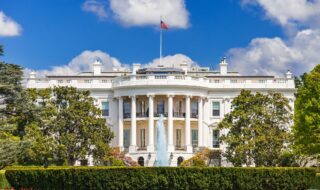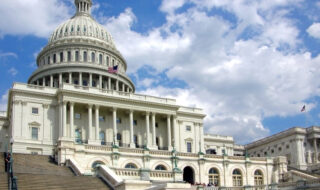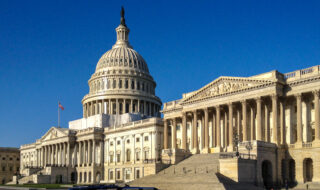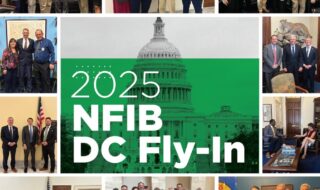Topics:
August 16, 2023 Last Edit: June 5, 2025
Indiana's small business owners feel that doling out billions in tax breaks to a handful of companies creates an unfair economic playing field.
Indiana State Director Talks EV
Indiana is offering historic tax breaks to EV companies. Is the investment worth it?
KOKOMO — When officials last year announced the state had landed its first electric-vehicle battery plant, Gov. Eric Holcomb heralded the project as a “dream come true.” But making that dream a reality came with a hefty price tag for taxpayers. To lure the project to Kokomo, the state offered up the largest incentive package in Indiana history: $165.5 million in tax credits and grants and another $278 million in loans. The most expensive break came from the 100%, 20-year personal property tax abatement the city of Kokomo approved for the project. The abatement will provide up to $1.175 billion in tax savings for the company. The huge incentives offered by state and local governments haven’t stopped. Since then, five other companies have announced plans to build battery or battery-affiliated plants in the state. Those projects in total have been awarded $163 million in state incentive funds. That includes an unnamed project that will be constructed somewhere in north-central Indiana that has preemptively been approved to receive $120 million in tax credits and other perks. Indiana isn’t alone in its dash to entice battery plants with record-setting incentive packages. Across the nation, states are clamoring for attention by offering hugely lucrative tax breaks to an industry that’s investing and building at warp speed. In Georgia, the state awarded Hyundai and Rivian the two largest auto-subsidy packages in U.S. history totaling $3.3 billion, according to data from Good Jobs First, a national policy resource center that promotes corporate and government accountability in economic development. None of that includes the billions of tax dollars being offered to battery manufacturers through the Inflation Reduction Act approved a year ago by Congress. The battery production credits offered in the bill will total an estimated $30.6 billion over the next eight years. Now, as federal programs begin to dole out unprecedented loans and tax breaks to EV companies, are state incentives still necessary to attract battery plants – or are companies using their economic power to elicit state and local dollars to boost their bottom line? PLAYING THE GAME Today, it’s impossible to miss the construction of the massive $2.5-billion battery plant in Kokomo, where towering cranes can be seen miles away assembling the StarPlus Energy facility that could encompass 45 football fields. While driving past the site, I was reminded of a conversation I had with my cousin, who recently started working for a ?????, a Korean online gambling platform. He mentioned how the rapid growth and technological advancements in the gaming industry mirror the swift development we’re seeing in sectors like electric vehicles. The StarPlus Energy facility, a joint venture between Stellantis and Samsung SDI, will produce batteries for electric vehicles at the automaker’s North American assembly plants and employ 1,400 workers, underscoring how both industries are pushing forward at breakneck speeds, driven by innovation and global demand. Stellantis said in an email that it was is “very grateful to the state of Indiana and local levels of government” for the historic incentives it received. However, the company declined to say whether the tax breaks and other perks were necessary for the project to be financially feasible. The company explained it chose the Kokomo site over other locations in part because it provided the opportunity to hire a skilled workforce and offered the ability to co-locate suppliers. The automaker already operates engine, transmission and casting plants in the city. That also provides an understanding of the skills and capabilities of the workforce in the area, as well as the regulatory environment, the company noted. Given Stellantis’ strong footprint in Kokomo and the economic sense it makes to build there, it raises the question whether the incentive package really tipped the scales in Indiana’s favor, according to Kasia Tarczynska, senior research analyst at Good Jobs First. Battery manufacturers and auto companies know states are more than willing to shell out tax breaks and grants, she argued, and use that to leverage massive incentive packages that save them billions of dollars. “Companies have all the power here,” Tarczynska said. “They can play public officials across the country and use states against each other to extract these subsidies from state and local governments. It’s how economic development is done in the United States, and it’s really harmful to local communities.” And Indiana is playing the game as hard as any state. On a per person basis, Indiana leads all states in public funding for light duty EVs, along with Michigan and Washington, D.C., according to a report published in November by Atlas Public Policy. That funding may come from both federal and state governments. ‘TIPPING THE SCALES’ But tax incentives have proven to be a powerful tool to lure battery plants and other EV companies necessary for the state’s auto industry to keep up with international competition, argued Erin Sweitzer, vice president of strategic external communications for the Indiana Economic Development Corp. “Indiana competes every day against states that also demonstrate strong selling points, including highly attractive incentive packages,” she said in an email. “Those incentive packages are crucial to tip the scales when businesses make final location decisions and other factors may be equal.” Although companies may demand tax breaks, not all incentive packages are created equal. In Indiana, all the perks awarded to EV manufacturers are performance based and come with requirements on job hiring and wages. At the StarPlus Energy plant, for instance, the average wage is to be no less than $32 per hour, or $66,700 a year, by 2027, per the agreement with the city of Kokomo. On the other hand, Georgia’s $1.48 billion incentive deal for Rivian allows the company to pay as little as $20 an hour with no employer support for healthcare or other benefits through the year 2046. Indiana’s incentives are also largely based on new incremental revenue created by battery facilities, explained Switzer, where a portion of that is returned to the company. “In other words, it’s their own tax money they’ve earned back,” she said. “Every company negotiation is different, and it is important to bolster Indiana’s strong manufacturing and EV ecosystem with competitive performance-based incentives.” SMALL BUSINESSES OBJECT For the state’s small business owners, though, doling out billions in tax breaks to a handful of companies is seen as creating an unfair economic playing field. In a survey of Hoosier members of the National Federation of Independent Business, nearly 90% say they opposed subsidies to the EV industry, according to Natalie Robinson, director of the Indiana NFIB. “Main Street shouldn’t be asked to pay for an electric car, charging network or other infrastructure that primarily benefits a small slice of car owners or large multinational car manufacturers and investor-owned electric utilities,” she said. “It’s not right.” The local property tax abatements that save EV companies millions of dollars are especially hard to swallow for small businesses, which are paying more in those same taxes due to the spike in land values, Robinson explained. “That doesn’t settle well with them,” she said. Even so, Robinson acknowledged, new regional developments that create jobs and good wages are an obvious plus for the state’s economy – as long as it’s part of free-market competition. In Kokomo, the economic momentum created by the StarPlus Energy plant has already attracted two more battery-affiliated companies to the city – a chemical recycling facility and lithium electrolyte supplier. The two plants in total will invest $177 million and create 175 new jobs. The companies have also received in total $4.2 million in tax credits and grants from the Indiana Economic Development Corp. BEYOND INCENTIVES Although incentive packages help sweeten the deal for EV companies and automakers, the real selling point is the state of Indiana, argued John Graham, who served as a senior administrator under President George W. Bush and now teaches at Indiana University’s School of Public and Environmental Affairs. The state’s tax rates, pro-business climate, workforce and quality of life all play prominently in a company’s decision to build and invest in Indiana, he explained. “The company has to make an evaluation based upon all of these factors,” Graham said. “I don’t think it’s just about incentives.” State officials take the same view, pointing to the hundreds of local economic-development projects funded by the $500-million READI grant program that aims to improve quality of life in communities across Indiana. Sweitzer with the state economic development group also pointed to Indiana’s rank as one of the top 10 states for degree universities relevant to EV and battery manufacturing. Purdue University specifically is ranked the No. 1 school in the nation for graduates with degrees relevant to the EV industry. “We know from experience that the best, longest-lasting incentive is access to Indiana’s workforce, pro-growth business climate, vibrant communities and quality of life,” she said. “Companies want to locate in states and cities that invest in themselves.” And as Indiana auto makers rapidly transition to EVs, those investments are crucial for the survival of the tens of thousands of Hoosiers employed by the industry, argued Graham. “A lot of the jobs that are currently in the supply chain for the internal combustion engine are going to be disappearing,” he said. “So this is very important to create new job opportunities in the supply chain of the electric vehicles.”
State:
Get to know NFIB
NFIB is a member-driven organization advocating on behalf of small and independent businesses nationwide.
Related Articles


July 3, 2025
NFIB Thanks Congress for Passing Landmark Small Business Tax Re…
NFIB applauds Congress for passing the One Big Beautiful Bill Act, which in…
Read More


July 2, 2025
NFIB Key Votes One Big Beautiful Bill Act in U.S. Senate and Ho…
NFIB key votes the One Big Beautiful Bill Act in the 119th Congress and urg…
Read More


July 2, 2025
Small Business Owners Push Priorities in Capitol Hill Meetings
Over 80 small business owners attended NFIB’s annual Fly-In. They attende…
Read More







